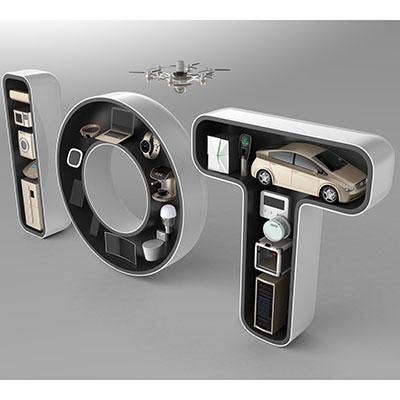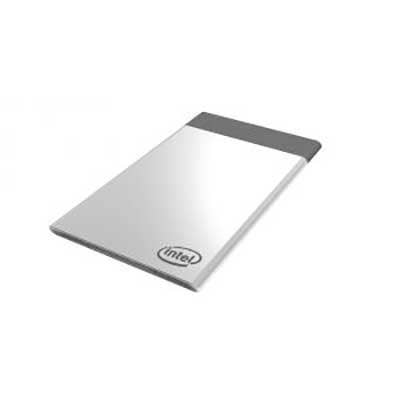Greg Pearson On How Intel's Transformation Will Shape The Channel Focus And Drive Growth
Profiting From Change
Intel has undergone a massive transformation over the past year aimed at driving growth in its data center, cloud services and Internet of Things businesses. Greg Pearson, senior vice president and general manager of the sales and marketing group, discusses how these changes will shape the channel's focus and its own growth in the future.'
Get more of CRN's coverage of the 2017 Intel Solutions Summit, here.

Talk about your strategy in shaping Intel around cloud, data center and IoT technologies.
Intel's strategy continues to focus on powering the cloud and billions of smart, connected devices that drive an enormous flood of data. The need to process, store and transport all that data creates a cycle of growth for Intel because we are able to add value in every part of the equation. So, data is really core to Intel's strategy and growth in the data center, memory and Internet of Things. We are also making investments in new, data-intensive areas like artificial intelligence, autonomous driving, virtual reality and 5G.

What opportunities for profit are these segments opening up for the company?
We see incredible profit potential as more data-intensive opportunities emerge. Today, of course, Intel has won a leadership position in the established markets for server and PC microprocessors. These businesses remain important sources of revenue, profit, scale and IP for us. Combined, they're worth about $45 billion and we're very focused on keeping these established businesses healthy and strong. At the same time, we're setting our sights on a much larger silicon opportunity fueled by the explosion of data. Our estimates show that the total addressable market for silicon could grow to $220 billion by 2021. So, Intel plans to invest in opportunities that build on our strength in PCs and servers, leverage our manufacturing leadership, and benefit from Intel's scale.
We've identified three clear areas with incredible potential: the cloud and data center, memory technologies and connectivity, and data-rich things and devices. We believe that if we can execute in these three areas, we can win market share in an expanded market for silicon.

What are the opportunities in the IoT segment for Intel? What particular verticals do you view as the most lucrative markets for Intel to tap into with its IoT products and solutions?
Internet of Things represents a $30 billion opportunity in 2021. That $30 billion opportunity comes from four focused vertical segments that have multi-billion dollar market potential: retail, transportation and advanced driver-assistance systems, industrial, and video. A trend we're seeing in each of these industries is the consolidation of workloads. For example, in a car, computing tasks that used to be distributed across a range of sensors and processors are now being combined into one integrated solution. That bodes well for us because it's more complicated and demands higher performance … stuff we're really good at.
We also have the connectivity and data center assets to provide an end-to-end solution. We can bring a similar high-performance, end-to-end advantage to connected factories, smart security cameras and retail automation … just to name a few.
What areas of growth are you doubling down on in your client compute segment, whether it's the enthusiast market or the 2-in-1 market?
Keeping our client computing business healthy and strong is one of our company priorities. Our strategy is to focus on performance leadership, integration and innovation in segments of the PC market that are growing, like 2-in-1s, gaming, gateways and virtual reality. At the same time, we need to also grow our ’adjacent' products like Wi-Fi, Thunderbolt, modems, and Intel Optane [memory] technology.
We're really excited about Optane, and I think it's a big opportunity for the channel. Our new Intel Optane memory module, 16-GB and 32-GB, for desktops is now available for customers who want to install it in their Intel-Optane-memory-ready motherboards or systems, and later this year PC makers will start shipping products equipped with Intel Optane memory.

Talk about your strategy for the channel as Intel focuses more on these new areas of growth.
When it comes to the channel, we're aware our Intel Technology Provider program members have a wide breadth of expertise and serve customers in areas that range from data center, memory technology and cloud. In IoT they are experts in such areas as retail, transportation and smart buildings. Instead of limiting where our partners play to fit into our focus areas, we're investing in creating flexible platforms that allow our channel partners to adapt and innovate with things like NUCs and Compute Cards where we've seen our partners invent solutions we never envisioned. Of course, we want to provide the training and support to help them flourish in those areas. No one knows their business better than our channel partners so, as it has been in the past, we'll continue our strategy of enablement.

How is the company powering ahead to help position channel partners to drive sales in these lucrative markets?
A saying comes to mind: ’To a man with a hammer, every problem looks like a nail.' Our team supporting the Intel Technology Provider partner program used to align to our different product and solutions groups but we've re-aligned to make everyone a generalist with a few specialists in high-interest areas. The intent is for our team to not only suggest the right tool for the job, but also spot trends and opportunities they see happening in the market. In turn, we'll share that insight with our partners.

What is the profit opportunity for Intel partners with IoT?
The workload consolidation we see in IoT segments from transportation to video and industrial creates new opportunities for the channel. Rather than buying products in isolation, companies are looking for partners who can deliver an end-to-end solution that connects intelligence in the cloud to deliver new experiences in the store, in the car or in the factory. IoT is one of the biggest boom areas for our channel partners. Almost half of them have at least engaged in a proof-of-concept solution in IoT in segments like retail, transportation, security, smart buildings and industrial. The reason why this is such a big opportunity for our partners is that IoT solutions need a high level of customization, allowing our partners to win business by showing off their ingenuity. The channel is so creative and agile, we know they will come.

What are the opportunities for growth for partners in the client compute segment?
PCs are still an important part of Intel's business and we are constantly thinking about form-factor innovation to adapt to how we all compute today. We think the growth opportunities in client computing are in areas like 2-in-1s, gaming, gateways and virtual reality. Outside of systems, we think Optane is a very compelling opportunity for the channel. Computing is constantly changing so we've developed new versions of the NUC and an iteration of the Compute Stick -- the Compute Card -- as a flexible platform that could be used in a conference room in combination with a monitor or turned into digital signage.